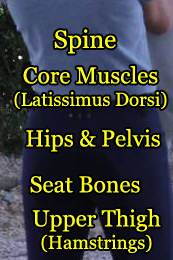Walk
Walk Defined
A clear “four-beat” gait with footfalls following one another. This gait has a clear, even rhythm as the feet land and take off. There are 4 variations of the walk – the collected walk, the medium walk, the extended walk and the free walk.
How to Execute the Walk
Start at a halt
Thighten abdominals and deepen the seat.
Keep upper body straight
Close both calves on the horse’s side
Maintain rein contact, but yield slightly
Relax seat and calves
Follow the movement at the walk
Notes:
If the rider imposes too much in the walk by restricting with the hands or trying to force overstepping, the horse will lose the purity of his gait. This can be detrimental given that the walk is the only movement that consistently holds a co-efficient of 2 from the training level through the Grand Prix in dressage tests.
When the horse is walking, the rider’s hands to move with the horse by maintaining elasticity in the elbows. As the horse’s head moves forward and down, the elbows should open. When the horse’s head comes back up the elbows should close. This allows for a consistent, soft contact with the horse’s mouth. Thus resulting in a fluid, pure walk where the horse is swinging through the back.
Purpose of the Walk
To relax the horse after exertion.
To provide a slower rate of speed when learning new movements.
Common Errors in Execution
The horse jigs or prance.
The horse walks laterally (both feet on the same side moving instead of opposing sides).
The rider restricts the horses movement with a rigid hand.
The rider tries to force overstepping.
The horse lacks energy and drags his toes.
Author: Dressage Academy
Volte
The Walk Pirouette
You May Also Like

The Seat
February 7, 2018
Rhythm – Let’s Get into the Groove Newsletter
March 28, 2018
One Comment
Pingback: